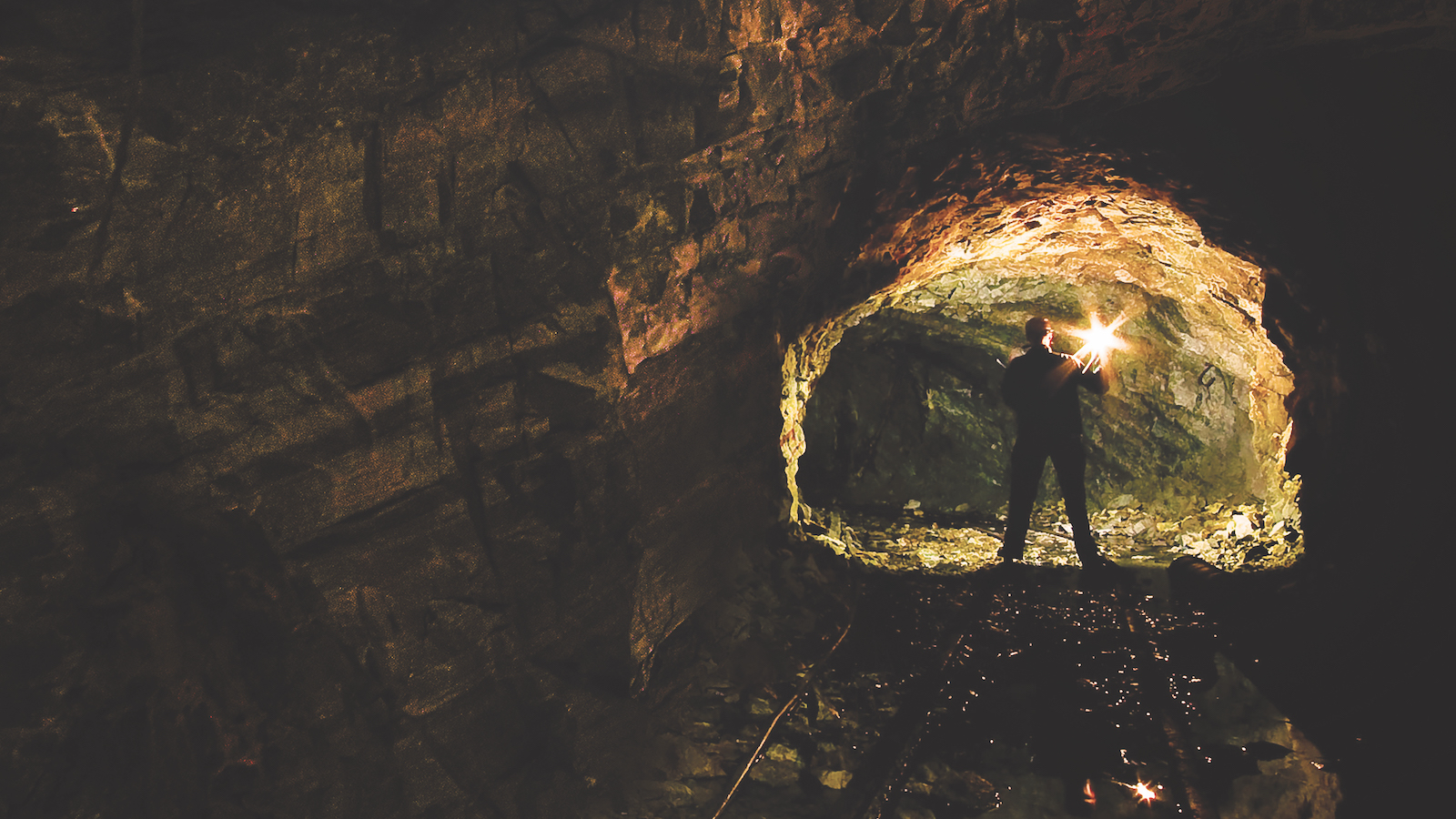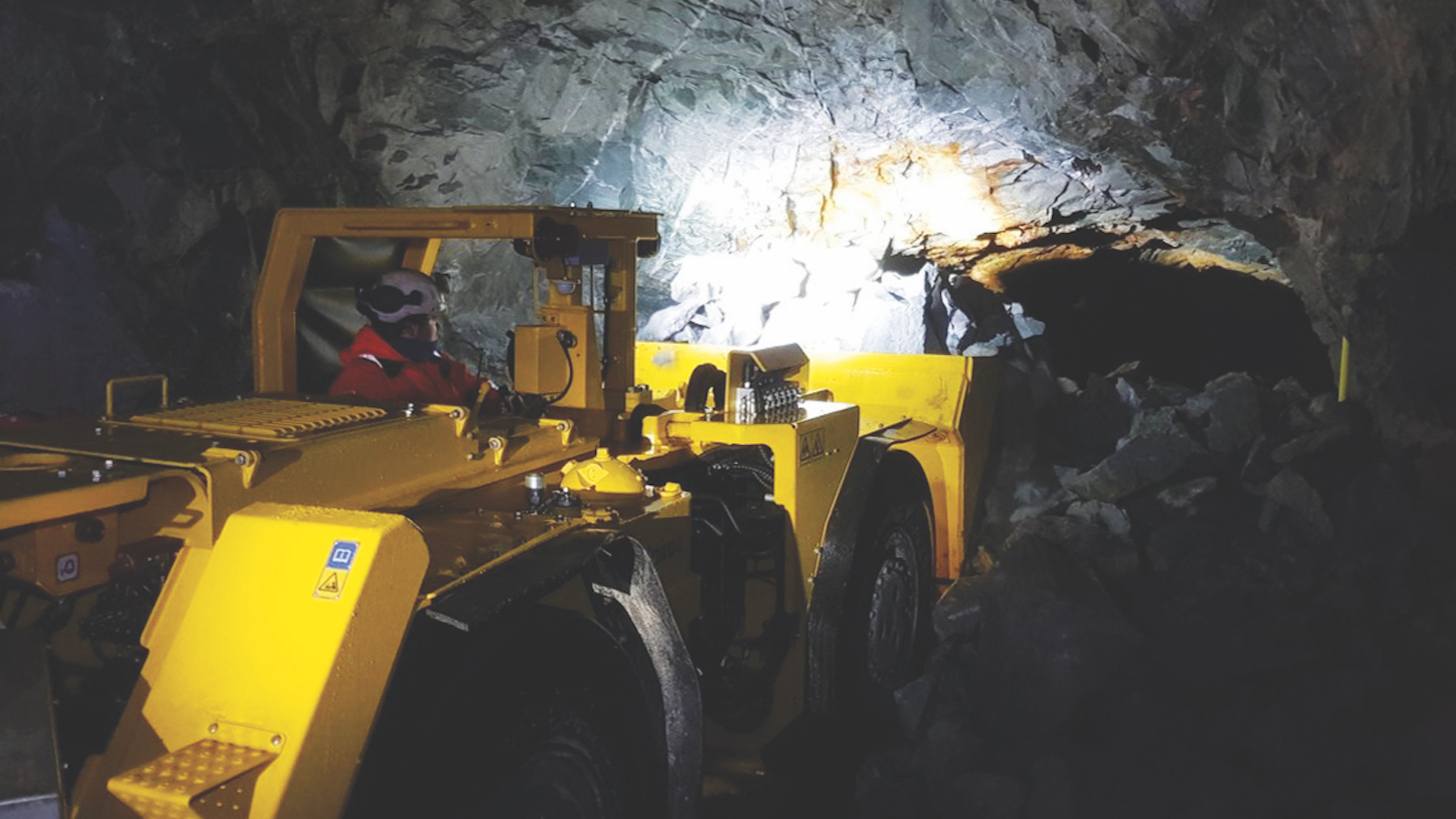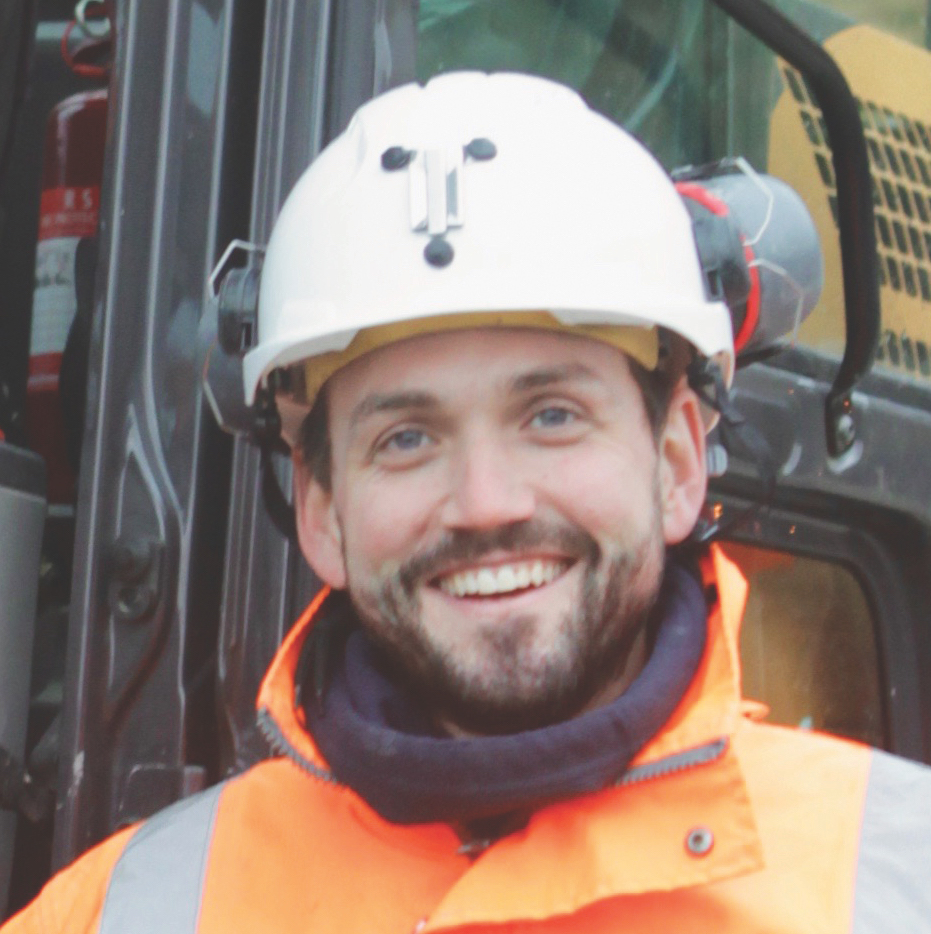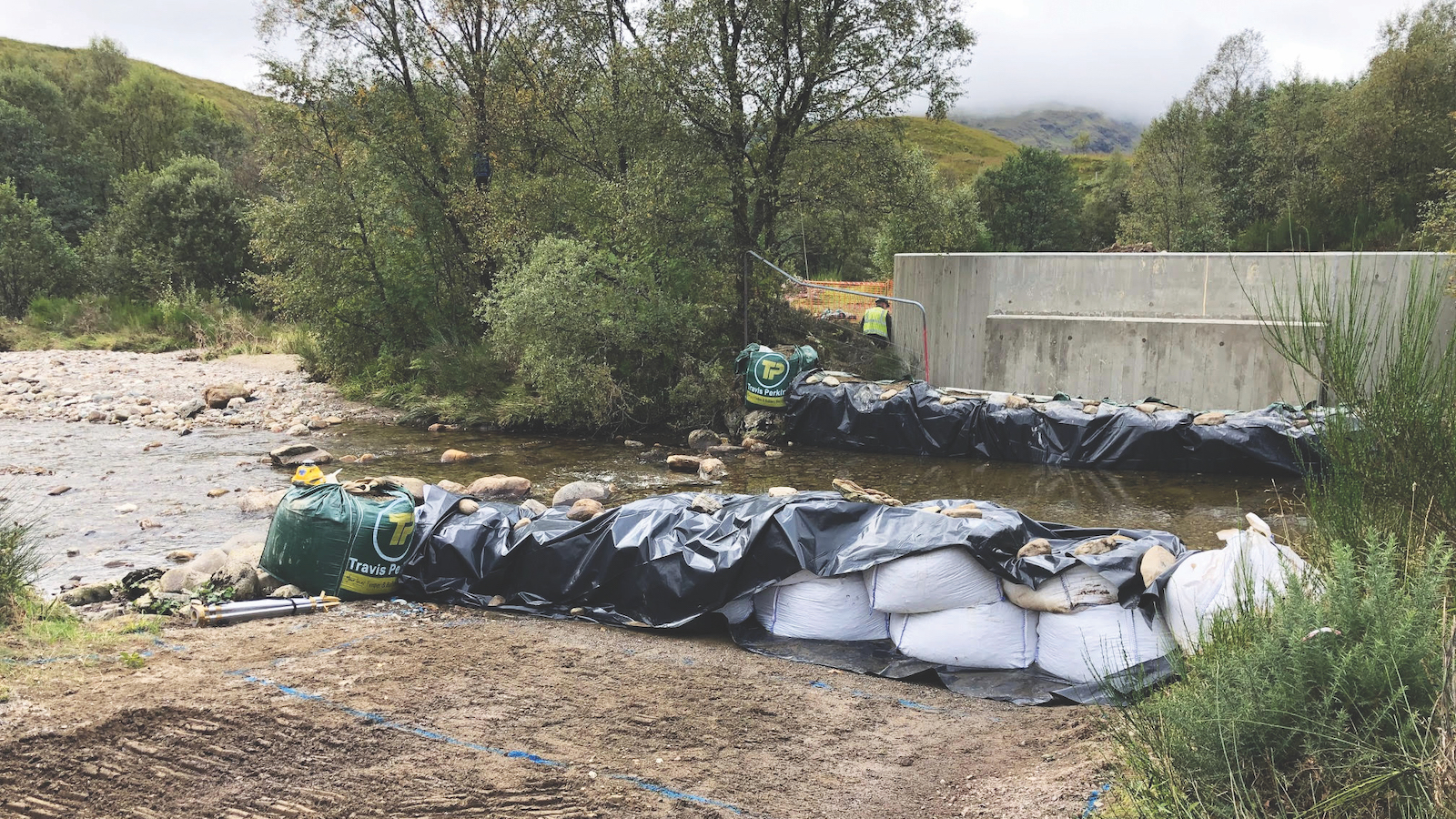Up in the wilds of Scotland, a CIOB member has been overseeing the construction of a gold mine. Kristina Smith met him

Construction managers often claim that their projects are unique. In Jason Saint’s case, that would be hard to argue with. Because CIOB member Saint managed the construction of Scotland’s very first commercial gold mine, where he continues to work on the operations side.
With experience on mining sites worldwide – and on major construction projects – the gold mine has been an experience like no other for Saint. The mine is in a National Park, which means that the list of planning constraints and conditions is a long one.
“The biggest challenge has been the variability,” says Saint, who is employed by Scotgold Resources, the company set up to extract gold at the site. “Here, you have to cover all the disciplines – legal, planning, environment, health and safety, civil structural, electrical, comms, IT, metallurgy, mining. Usually you would have at least one person for each of those disciplines.”
“Here, you have to cover all the disciplines – legal, planning, environment, health and safety, civil structural, electrical, comms, IT, metallurgy, mining”
Other factors which made the construction process difficult included planning struggles, extremely wet weather and larger depths of peat than predicted. And all was documented by a BBC film crew, leading to a three-episode series called Gold Town.
Saint, who has been based at Tyndrum, a village in the Grampian Highlands on the northern edge of the Loch Lomond and Trossachs National Park, has taken it all in his stride.
“I am a people person – it’s part of our nature in construction,” he says. “You have to like people because they deliver our end product. The BBC film crew soon became part of the team; they weren’t aggressive or pushy.”
The project story begins in the 1980s, when gold production was first attempted by Ennex International with a 900m-long exploration adit dug between 1989 and 1991. In 1991, the price of gold fell, and the company pulled out.
In 1996, Caledonian Mining took up the golden mantle, only to be thwarted when the National Park was established in 2002, introducing more stringent planning constraints. Scotgold took over the site in 2007 and finally secured permission after negotiations and some compromises on how the land would be reinstated.

Judging from the BBC documentary, local people are supportive of the mine. Saint confirms this: “The community have been very good. We have been very fortunate.” Support for the development of the mine was boosted by the creation of 50 additional jobs.
The mine is named after the farm to which the land belongs, Cononish; Scotgold leases the land from the farmer. The vein of quartz ore, which contains both silver and gold, varies in width up to 8m, although its average width is 2m. It has a vertical depth of 500m and runs for over 1km.
When CM interviewed Saint in May, the mine was due to complete its first shipment of concentrate, a product that looks like fine-grained sand and which then needs further processing with chemicals off site to extract the gold. The mine will also produce more concentrated product, nuggets containing around 40% gold, but that is only possible when the gold is in high concentration.

“It is a very variable ore body,” explains Saint. “It can be extremely high grade, up there with some of the best I have seen or worked with. But it’s also about the quantity.”
To the layperson, the quantities of gold involved seem incredibly small: Scotgold is talking about a production goal of just over 666kg a year. But that can equate to a handsome sum of money, depending on the price of gold. At the time of writing, it was high: £43.19 a gramme.
The civil and building works associated with the Cononish mine are modest, and on a smaller scale compared to other projects Saint has worked on. Not far from the mine entrance is the processing building, basically a shed, on a base cut into the mountainside. Often these plants are open to the elements, but here a building was required by the National Park.

Construction manager CV: Jason Saint MCIOB
Having trained as a civil engineer in Australia, Jason Saint arrived in London in 2004, attracted by the possibility of combining experience on huge construction projects with travel in Europe. “There was a lot of work going on in London at that time: T5, preparatory works for Tideway, Canary Wharf. Australia had not reached a $1bn project yet,” he says.
Saint worked at Heathrow T5, King’s Cross for Laing O’Rourke and Mogden Sewage Treatment Works for Birse Civils, before he was called to Romania by a friend who needed cover while he went on holiday. “I went for two weeks and stayed for four years,” says Saint.
Since then, he’s worked in a variety of international locations before arriving at the Cononish mine in April 2019 as construction manager. Two years later, his role changed to group operations manager, leading the mine team, the process team and the subsidiary team to meet production.
Saint is a member of the Institute of Engineers in Australia and joined the CIOB on the recommendation of one of his former colleagues from Heathrow. He has recently been invited to apply to be a fellow.
The development of the mine access, widening the original hand-dug tunnel to accommodate modern equipment, was underway in parallel with the civil works, although this was overseen by the mine manager. Saint’s remit also included delivery of enabling works including improvements to a road junction, a new car park and a replacement bridge over a small river where the existing wooden bridge had a 2-tonne limit, no good for heavy construction plant.
“It is small scale but highly sensitive,” says Saint, who arrived in Tyndrum in April 2019.
“It’s a special area of conservation because of salmon breeding so we were held to account by SEPA (Scottish Environment Protection Agency) and the National Parks authority.”
The bridge consists of concrete buttresses, a steel deck and timber runners, “in keeping with the look of the place”, says Saint. The West Highland Way, a popular hiking trail runs right past it.
Due to the construction of the bridge and the size of the equipment, Scotgold also had to negotiate with Network Rail for construction plant to use an alternative route via a forestry road which is accessed from a level crossing. Saint expresses surprise over the difficulty of the negotiations and the fee charged to use the crossing.
The initial plan had been to start construction of the bridge in April or May and to begin earthworks for the processing plant platform at the mining site in August, completing by Christmas 2019. However, the bridge start was delayed by engineering and planning, with approval only granted at the end of August 2019.
Once earthworks did get underway, there was another setback: there was far more peat than the site investigation had indicated. Scotgold’s permissions only allowed for the relocation of a certain amount of peat.
“We have very strict controls on the peat and turf recovery,” explains Saint. “You cannot just cut and fill and put the peat and turf to one side. Instead, we have to segment the earthworks. The slab is 80m by 30m and we had to do it in 16 different sections. When we lifted a piece of turf, it had to go in a certain place. It could not be stockpiled. It was like a jigsaw puzzle.”

Rain also stopped play on multiple occasions, with the heavy machinery unable to operate as it became bogged down in the mud. Saint changed tack, switching to lighter plant and trucks, which the miners operated to reduce costs, since they had completed much of their access adit work and were waiting for the production plant.
With the weather clearing, coronavirus struck. The mine had to shut down, with a skeleton crew in place for maintenance and safety. “With a reduced workforce, the economics were better,” says Saint, “and we were able to slowly continue with the works. But it stretched the business.”
“They were not used to an Australian project manager who wants millimetre accuracy on a slab. But it has to accommodate very heavy,
very expensive equipment”
In July 2020, the concreting of the building base began, followed by the installation of the processing plant and the erection of the steel frame building around that. There was no thought of employing specialist mining contractors at Coronish, says Saint, due to the small scale of works, but that did mean the companies used had to learn to work differently.
“The civil contractor and building contractor are agricultural shed builders by trade,” says Saint. “They were not used to an Australian project manager who wants millimetre accuracy on a slab. But it has to accommodate very heavy, very expensive equipment.”
The process plant building, which is clad in profiled sheet metal cladding is insulated to contain noise. It also houses a workshop, offices, storage and welfare facilities, with the internal rooms supplied as modular, pre-fitted units.
The works will also include a tailings management facility. Tailings are the waste product from mining, the rock that cannot be used, which is in slurry form, having been through a ‘wet grinding’ process. Often the resulting slurry is stored in lagoons contained by dams and left to dry out. At Cononish they will be dried using a filter press with the resulting material used to create mounds that mimic the landscape of the surroundings, with 10 stacks over the life of the mine, says Saint.

Scotgold reported its first gold pour on 30 November 2020, St Andrew’s Day, 11 months later than was initially mooted. The production of this first tiny cone-shaped nugget was largely symbolic. Production proper was yet to be achieved and then ramped up in two phases to full capacity.
There have been teething problems getting the processing right, with production forecasts for 2021 downscaled and the company reporting delays to its production ramp-up. Recently, Scotgold has been raising money to accelerate the increase in the rate of production and some of the main shareholders have announced a short-term loan to provide working capital. In April this year, a new CEO, Phillip Day, took over from Richard Gray who retired, having founded the mine.
Facing a long future
For Saint, the ramp-up of production means a new phase for him too. He has taken on the role of group operations manager, a move that is partly due to family commitments. He has two daughters in London and, although the Cononish site might seem remote to many, for someone who is used to working in locations far from civilisation, it is quite the opposite. The midges are bad in summer, says Saint, but not as bad as being shot at.
There could be a long future for the miners and others at Cononish. Scotgold’s geologists believe there are more deposits which has “excited” CEO Phillip Day.
Many of the skills Saint has gained over his construction and mining career will be applicable in his group operations role. But there are new ones too, among them HR, finance, process engineering, logistics – even dealing directly with jewellers who have agreements to buy Scotland’s first ever gold.
Processing requires a different mindset to construction too, explains Saint. “You are dealing with people who are here for life. In construction, you want to get it done, get in and get out. The processing guys like to adjust and tweak and get things just right.”
If this role doesn’t suit Saint, perhaps he should consider a career in television. As the Gold Town series demonstrates, he is a natural in front of a camera.
Comments
Comments are closed.











Very interesting
Thank you for a most interesting article and update.
I have been aware of the gold mine most of my life and the various attempts to capitalise.
It is good that there is a requirement for the Company to make good the site, compared to the existing areas of spoil from previous lead mining
The November “gold pour” wasn’t presented as a symbolic event. It was announced as the promised start of mine production, which it obviously wasn’t. It looked like a stunt to appease shareholders, and especially the investors who had coughed up £3m a couple of months earlier when promised (by the since-replaced CEO) that production would begin in November. It was also staged for the BBC Scotland TV cameras so that they could finish their 3-part series on a fabricated high. The BBC were either complicit or gullible.